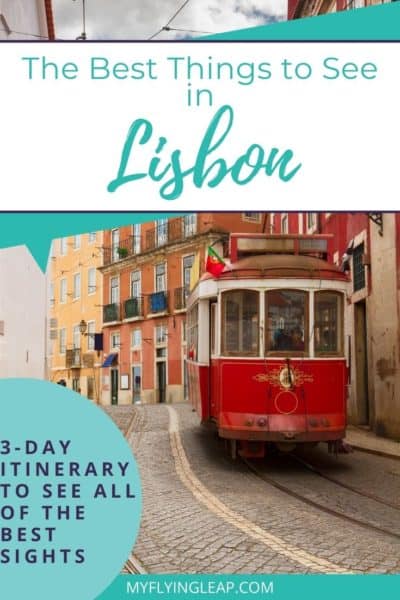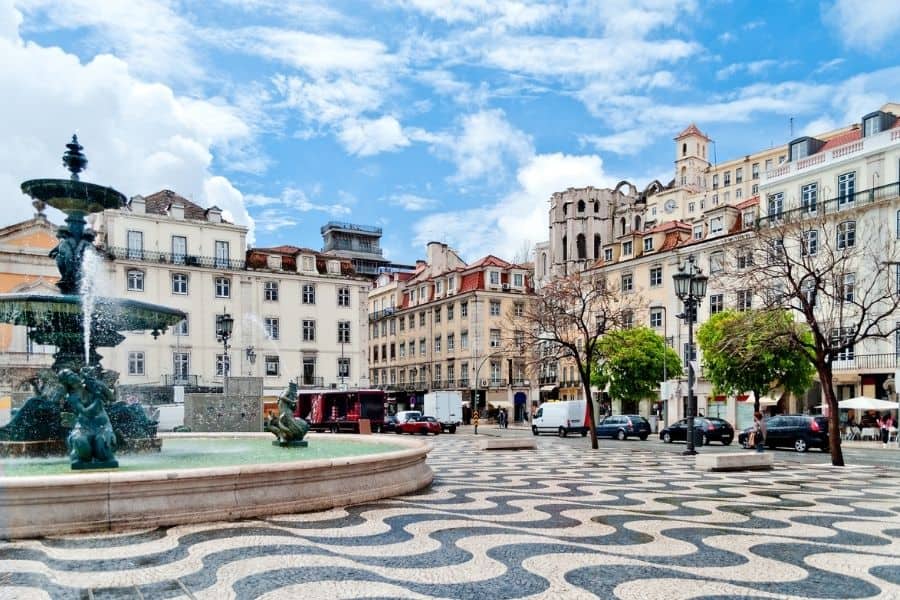3 Days in Lisbon: the Ultimate Itinerary
3 days in Lisbon may not seem like nearly enough for this amazing city, and in truth, the more, the better! This charming city has a lot to offer, including a rich culture, historical buildings, and incredible food.
But if three days is what you have, you can absolutely make the best of it and see all of the top sights. Here’s how to make the most of 3 days in Lisbon with a Lisbon itinerary that will take you to the must-see places.
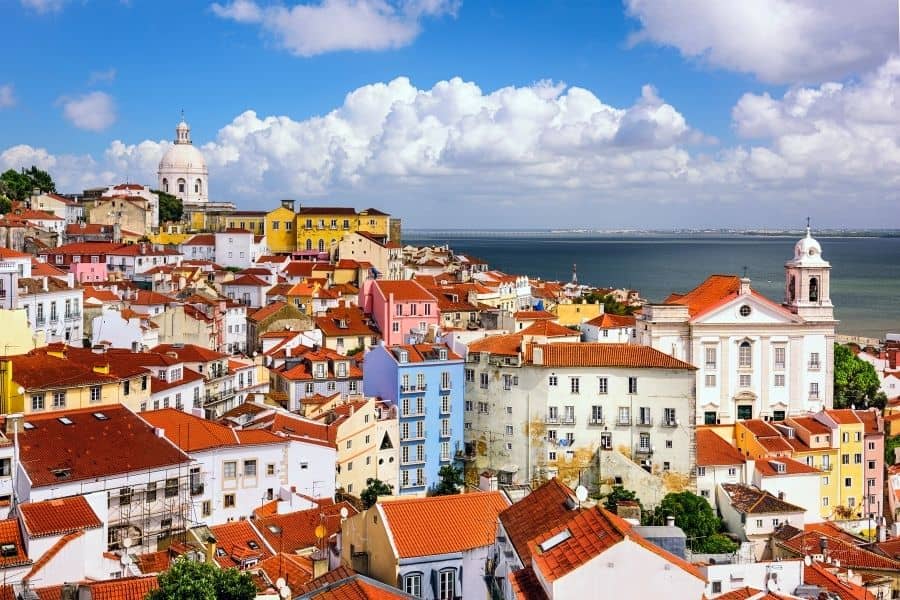
This post may contain affiliate links, which means I’ll receive a commission if you purchase through my links at no extra cost to you. Please read full disclosure for more information.
Day 1
- Chiado
- Santa Justa Lift
- São Jorje Castle
- Cacilhas
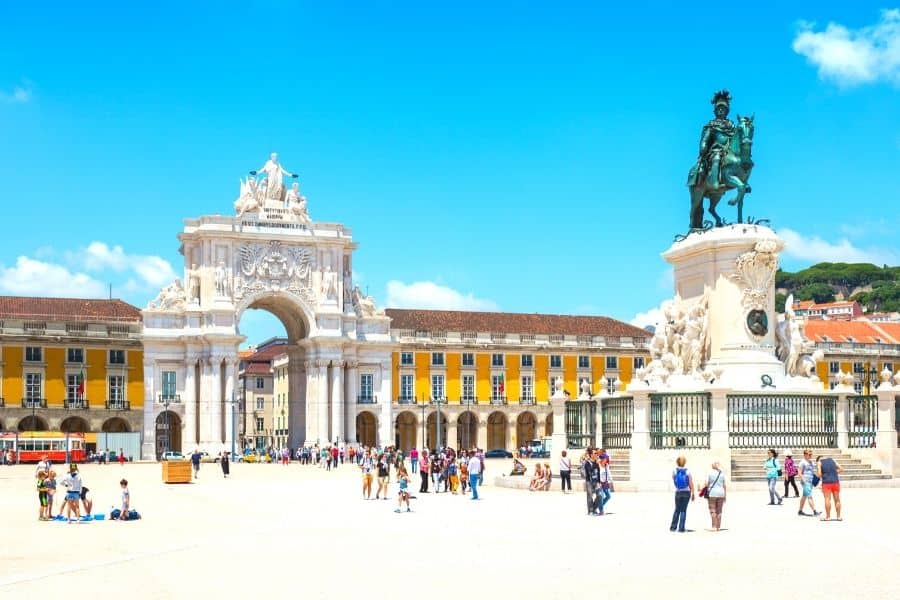
Day 2
- Belém
- Commerce Square
- Rua Augusta
- Carmo Square & Carmo Convent
- Fado in Bairro Alto
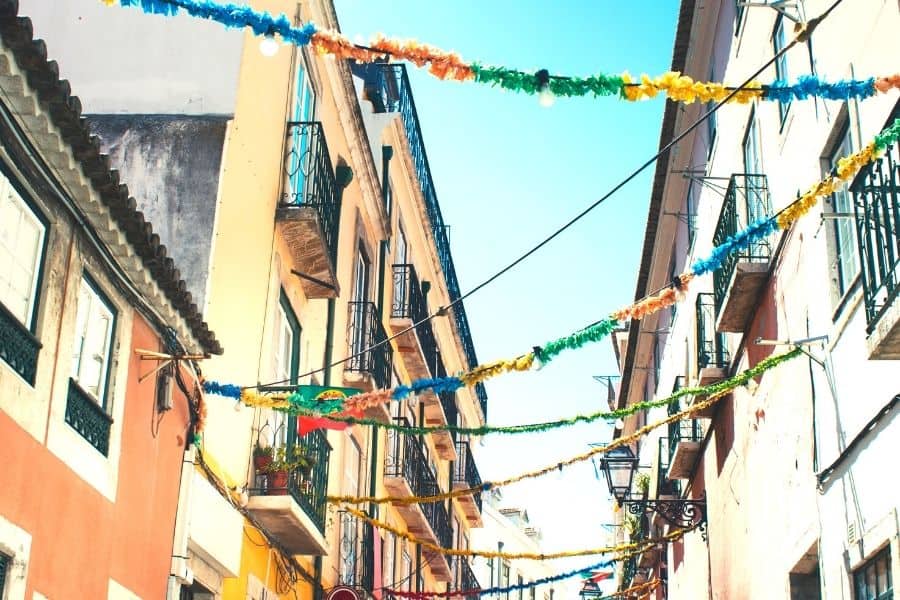
Day 3
- Alfama
- Rossio Square
- Mouraria
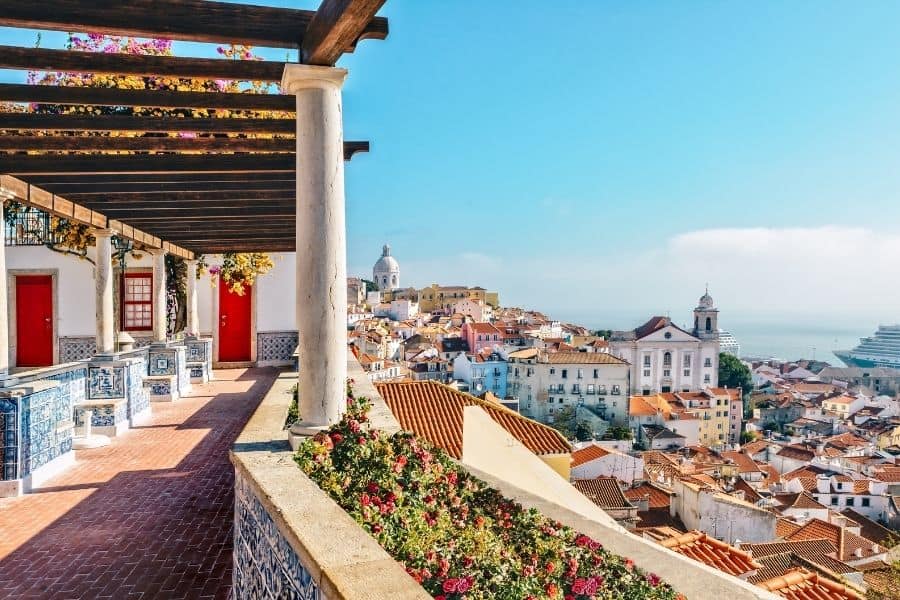
Free Walking Tours
I created this itinerary based on the best things to see in Lisbon and the area. Having said that, I always recommend that people consider free walking tours. They are a great way to get oriented to a new city by a local.
This means you not only have to do less planning, but you get a local’s perspective as well as some great stories and history for the places you visit. And you can also ask for recommendations for restaurants, etc.
If you do a free walking tour, I highly recommend Sandemans New Europe tours. I took their free walking tour of Lisbon and loved it. My guide was one of the best I have ever had on a walking tour, so I really lucked out. He shared some fantastic stories and made some great recommendations.
If you do decide to go on a walking tour, you may want to shift things around a little bit. I did sequence the places you’ll visit in this itinerary, but many of the places are fairly close to each other, so it’s easy to shift if you have already seen something.
Or, you may find you want to return to spend a little more time than you got to on the walking tour. You can’t go wrong either way, and it’s a matter of personal preference.
A foodie walking tour is another great way to explore the city. Check out this one, or this food tour is plastic-free and supports family-run restaurants in the Alfama neighborhood.
You May Also Like Why I Love Free Walking Tours
3 Days in Lisbon: Day 1
Start day one in the Chiado district in central Lisbon. You’ll then head to the highest part of the city and the castle, which is a landmark of Lisbon taking public transportation that is a tourist attraction in its own right.
You’ll end with a spectacular river view of Lisbon. Not a bad way to end the day!
Chiado District
You’ll start this day in the Chiado neighborhood. Then, you’ll head to Graça before heading across the river to Cacilhas.
A Brasileira and Pessoa
Chiado is one of the old central neighborhoods in Lisbon. Start your day at Fernando Pessoa’s favorite coffee shop, A Brasileira. Don’t know who Pessoa was?
No worries—he had an important place in literary circles and is considered “the most influential writer you’ve never heard of.”
Fernando Pessoa was a Portuguese poet and writer, and in the 19th century, he was one of the most influential literary figures. He was also a critic and wrote in many styles or personalities. This is interesting as his name, Pessoa actually means “person.”
You’ll find statues and likenesses of him around this area of the city. He’s always depicted as a tall and thin man with a hat, long coat, and glasses. You can even join him for your morning coffee at a table in front of A Brasileira, as there is a bronze statue of him there.
Wander around the area, and you’ll find at least a few more likenesses. I saw a poster of him as well as another statue in front of the National Opera House, Teatro Nacional de São Carlos. He lived across the street as a child.
You will also see a statue of him on an apartment balcony, and I’m sure you’ll find more if you look.
A Brasileira is located at R. Garrett 122, 1200-273 Lisboa, Portugal. It’s open daily from 8 a.m. to 12 a.m.
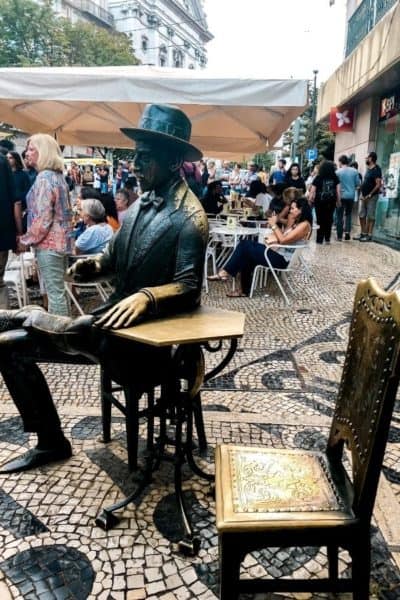
Bertrand Bookshop (Livraria Bertrand)
Next, head to Bertrand Bookshop, the oldest bookshop in the world. It was established in 1732, and it’s considered the oldest bookshop still in operation today. The location was moved from the original due to its destruction from the Lisbon Earthquake of 1755.
However, it didn’t move far. In 2011, it was recognized by the Guinness Book of World Records. There are now 52 sprinkled across Portugal.
Take some time to wander around this neighborhood a bit. There are some beautiful areas and a lot of fun shops to explore.
Santa Justa Lift
When you’re ready, head to the Santa Justa Lift. Only in Lisbon, I think, will you find a mode of transportation like this as a tourist attraction! This lift is on many must-do lists and an equal number of must-not-do lists in Lisbon.
Whether you choose to ride it or not, it’s worth seeing.
If you decide to not ride it, you can walk around to the rear and climb up to the platform to get a beautiful view of Lisbon. And the next stop is to the top of the largest hill in Lisbon. So, you’ll have a great workout getting there if you choose to not ride.
I suppose the hills of Lisbon are beneficial to locals as Lisbon seems obsessed with pastry. There are pastry shops on many corners, much like Starbucks in the United States! So, the locals seem to stay nice and fit by climbing the many hills in Lisbon regularly!
You May Also Like What Makes Portugal So Special
On the free walking tour I took, my guide talked about Lisbon as a city where you can conquer a castle by elevator. Thanks to the Santa Justa Lift, you can.
The Santa Justa Lift is located at R. do Ouro, 1150-060 Lisboa, Portugal. It’s open from 10 a.m. to 7:45 p.m. if you want to go for a ride.
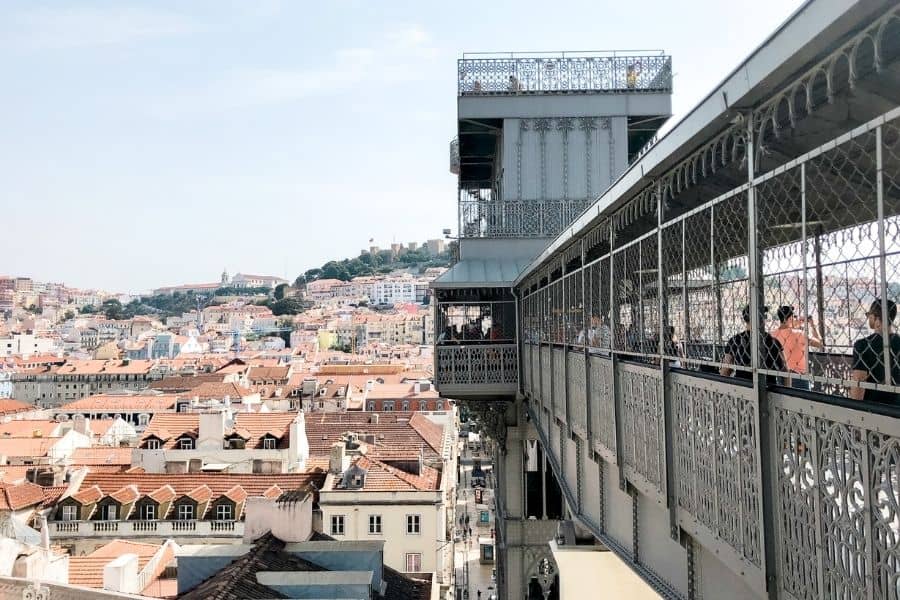
St. George Castle (Castelo de São Jorge)
São Jorge Castle, or Saint George’s Castle, is on the top of one of the largest hills in Lisbon in a neighborhood called Graça. The area has been strategically and historically important for the many groups that have occupied Lisbon, given its prime location at the top of the highest peak.
This castle has undergone many additions and updates through the centuries. It started as a small Visigoth fortress built in the 5th century and was later updated and enlarged by the Moors in the 11th century.
It hit its peak between the 13th and 16th centuries when the bishop and the royal family lived there. Again, it was enlarged and updated during this time. Later, it became military barracks, and it’s now a national monument and museum.
The castle is an iconic view in Lisbon. You can get some of the prettiest city views from the castle, so it’s worth seeing. It’s mostly empty now, so there isn’t much to see inside, but it’s still worth it for the views.
And while you’re in Graça, wander the maze of narrow streets. It’s a beautiful area worth spending some time exploring.
São Jorge Castle is located at R. de Santa Cruz do Castelo, 1100-129 Lisboa, Portugal. It’s open daily from 9 a.m. to 9 p.m. It costs 15 Euros (around $16 USD).
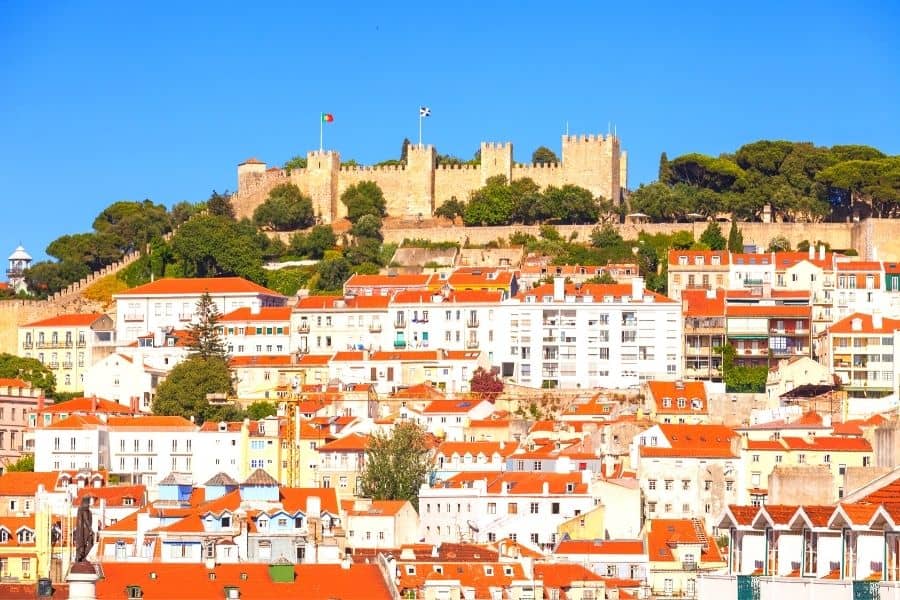
Cacilhas
For dinner, head across the Tagus River to Cacilhas. To get there, you’ll take the ferry from Cais do Sodré. The ride takes only ten minutes, and departures run every 20 minutes or so.
I recommend getting a Viva Viagem card, which you can use on all public transportation, including the tram, bus, metro, ferry, funicular, and train. More on that later in the section on how to get around Lisbon.
When you get off the ferry, head to your right (on Rua do Ginjal) and follow the sea wall. You’ll walk ten minutes or so when you’ll see a number of restaurants that look out over the river with incredible views of Lisbon.
Two of the most popular restaurants in this area are Porto Final and Atira-te ao Rio. I can personally recommend Atira-te ao Rio, and it was amazing. I put my name on the list for one of the seats outside, looking over the river, and enjoyed my dinner seeing the sparkle of Lisbon in the distance.
Portugal is known for its seafood, so if you like fish, you can’t go wrong with anything. I had their Portuguese stew, which was amazing. They have a small menu hand-written on a board on the wall.
Enjoy it with a glass of vinho verde, “green” wine (which is a young white wine that has a slight effervescence).
The ferry terminal is at R. da Cintura do Porto de Lisboa, 1249-249 Lisboa, Portugal. Ferries run several times an hour, and the last is at 11:30 p.m., so make sure you’re on it! It costs around 1.50 Euros (around $1.75 USD). If it’s your first public transit ticket, the card costs .50 Euros (around $.60 USD).

3 Days in Lisbon: Day 2
Your second day starts in the historic neighborhood of Belém. It’s actually on the southwestern edge of Lisbon, but it’s far enough from the city center that it feels and even looks like a separate city.
You may not have heard of it before, but when the great explorers of the Age of Discovery, like Da Gama and Magellan, set sail from Portugal in the 15th century, they left from Belém. Belém is a must-see when you visit Lisbon.
Plan to spend a half-day here as there are a number of places to visit when you’re there.
Belém
Belém is a popular tourist destination, and two of the buildings are UNESCO World Heritage sites: Jerónimos Monastery and the Tower of Belém. UNESCO World Heritage sites are recognized for their uniqueness, beauty, and historical importance. So, you’ll want to go early.
It’s easy to get to by bus or by tram, and the ride takes around 30 minutes on either from the center of Lisbon.
You May Also Like Why You Should Visit Belém
Jerónimos Monastery (Monesterio de Jerónimos)
You’ll generally see people lined up to visit this stunning monastery 30 minutes before it opens. To be honest, I’m not sure I have ever seen such a breathtaking building as Jerónimos Monastery.
As impatient as I am for waiting, I was quite happy to just stand there and gawk at this architectural marvel. If you get there early, you’ll have some areas almost to yourself without the throngs of tourists.
The monastery was built in the 16th century, and Vasco da Gama is actually buried within it. (However, there is some debate as to this fact as he died and was buried in Goa, India. As the story goes, he was later brought back to his homeland and buried here in the monastery.)
Buy a joint ticket to see the Tower of Belém and skip the line there, which also gets incredibly long. And you can also get a three-way ticket to see the National Archaeological Museum, which I do recommend.
Jerónimos Monastery is located at Praça do Império 1400-206 Lisboa, Portugal. It’s open from 10 to 5 every day except it’s closed on Monday. It costs 10 Euros to visit or 13 Euros (around $10.75 or $14 USD) with a combined Monastery and Tower of Belém ticket. I highly recommend a combined ticket as you can skip the long lines at the Tower, which you won’t want to miss.
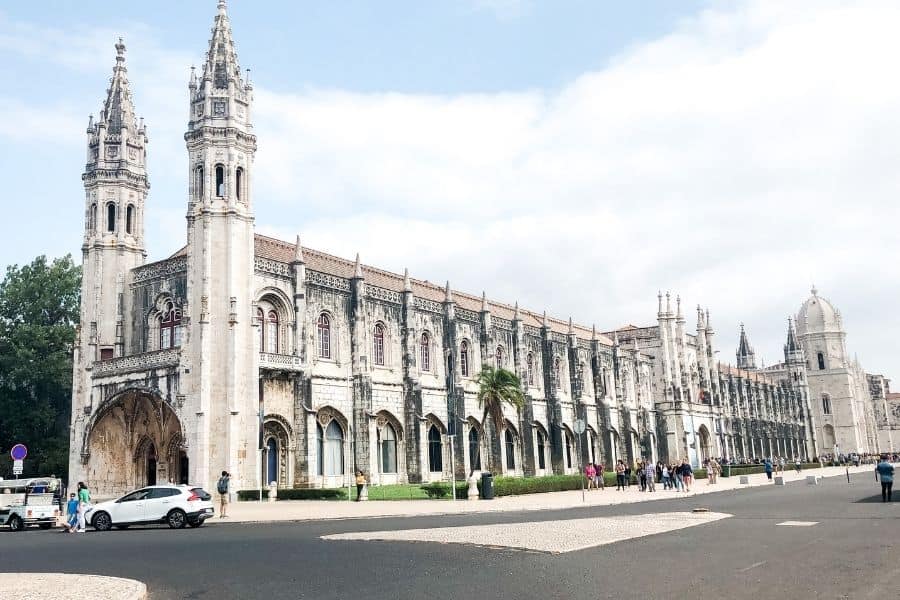
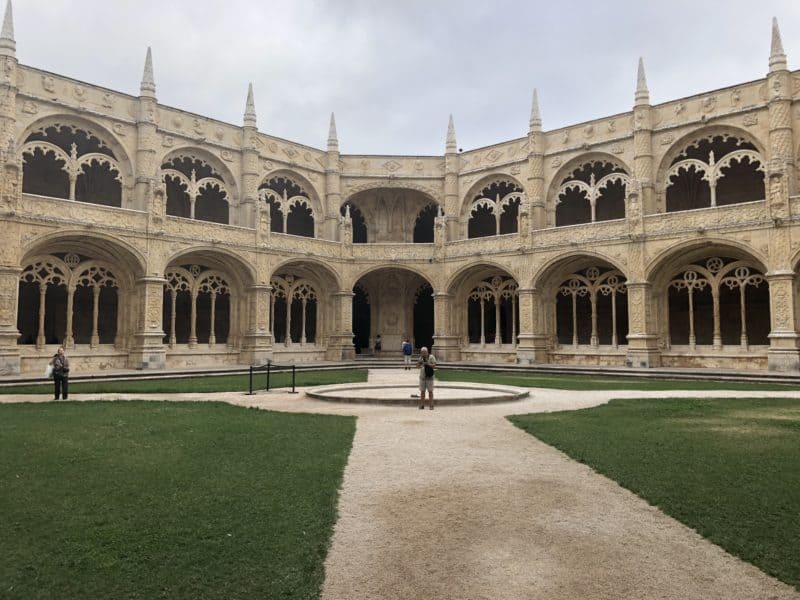
National Archaeological Museum
With your ticket to see the Tower of Belém in hand, check out this impressive museum. There are a number of exhibits, but the main draw is their impressive Egyptian and Roman artifacts.
It’s a small museum, but they have a beautiful collection that’s well-curated. You’ll see statues, carvings and tablets, jewelry, and even some ancient Egyptian sarcophagi.
It is housed in the monastery though it’s a separate entrance and a separate fee. It’s 5 Euros separately (around $5.40 USD), or $12 with the Monastery (around $13). It is currently closed for renovation until 2025.
Monument to the Discoveries (Padrão dos Descobrimentos)
Walk towards the Tagus River to the next stop, the Monument to the Discoveries. It was created to celebrate the Portuguese Age of Discovery in the 15th and 16th centuries.
This large statue was first created as a temporary exhibit for the 1940 Portuguese World Exhibition. Given the positive response, it was made into a permanent monument in 1960.
This carving of a group of men aboard a ship is impressive. It’s located on a foundation of black and white mosaic tile in a rippled pattern resembling ocean waves.
There is also a small museum inside and a platform with some great views of the river.
It’s located at Av. Brasília, 1400-038 Lisboa, Portugal. You can visit anytime, but the small museum inside is open from 10 to 7 daily.
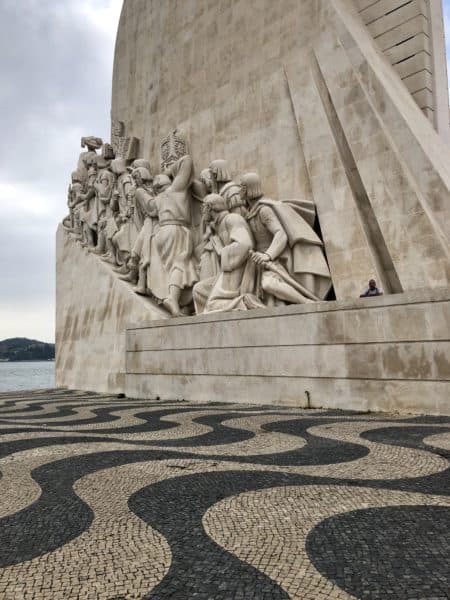
Tower of Belém (Torre de Belém)
The Tower of Belém is part of the UNESCO World Heritage Site along with the monastery. It’s not as ornate, though it’s just as impressive. The tower is four levels high and has an interesting system to navigate the one-way stairwell.
From the top, you get great views of the Tagus River, including the 25th of April Bridge and the Christ the King Statue across the river in Cacilhas.
The Tower of Belém is located at Av. Brasília, 1400-038 Lisboa, Portugal. It costs 5 Euros to visit or 13 Euros (around $5.75 or $14 USD) with a combined Monastery and Tower of Belém ticket.
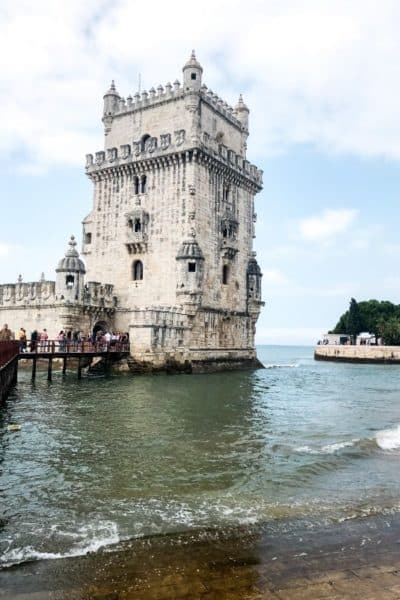
Pastéis de Belém
Before you leave Belém, stop at the famous Pastéis de Belém shop. Portugal is known for its pasties, and the Pastéis de Belém is their masterpiece. They are Portuguese egg custard tarts and delicious! They were created at the Monastery.
According to the story, they were created to use the leftover egg yolks remaining from the nuns and monks starching their attire with egg whites. You can get a pastel de nata, Portuguese egg custard, at most pastry shops, but you can only get one made from the original recipe at Pastéis de Belém.
If you’re hungry for lunch (you know, beyond a pastry!), try Pão Pão Queijo Queijo next door to Pastéis de Belém. It’s a casual sandwich shop with great fresh food. It gets quite busy, but it’s a great inexpensive place for a good meal.
Pastéis de Belém is located at R. de Belém 84 92, 1300-085 Lisboa, Portugal. It’s open daily from 8 a.m. to 9 p.m.
Commerce Square (Praça do Comércio)
Head back to the center of Lisbon to the impressive Commerce Square. It was created during the rebuilding effort after the Lisbon earthquake of 1755 leveled most of the city. It faces the Tagus River and is an impressive square containing some government buildings.
In the center of the square is a large statue of King Joseph I, king during the time of the earthquake. Towards the entrance of the back end is a large arch, the Augusta Arch. It has Greek mythological figures and important historic people carved into it.
Commerce Square is located here on a map.
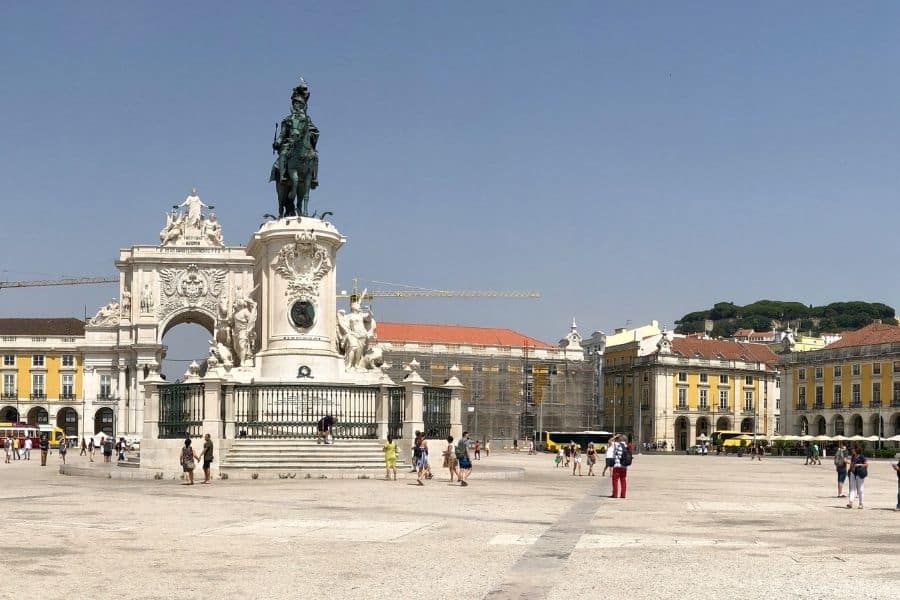
Rua Augusta
Pass through the arch to Rua Augusta, the most famous shopping street in Lisbon. If you’re looking for a souvenir, some beautiful azulejos tile in the traditional cobalt blue and white or another special thing to memorialize your time in Lisbon, this is the place to find it.
It’s an upscale area, but you can find some affordable treasures as well.
Carmo Square and Carmo Convent
Continue north a short way to visit Carmo Square. This famous square was the site of a (mostly peaceful) revolution. On the 25th of April in 1974, a military coup overthrew the authoritarian dictatorship that ruled Portugal for nearly 40 years.
Though the people were told to stay home by radio, they wanted to get involved. So, a peaceful civilian resistance joined the military rebellion. The people flooded the streets and gathered in Carmo Square to witness this historical and joyous event.
You May Also Like Conquer a Castle by Elevator in LIsbon
Carmo Convent is located at Largo do Carmo, 1200-092 Lisboa, Portugal. It’s closed on Sunday and open every other day from 10 a.m. to 6 p.m. in the winter and until 7 p.m. in the summer. It costs 5 Euros to visit (around $5.50 USD).
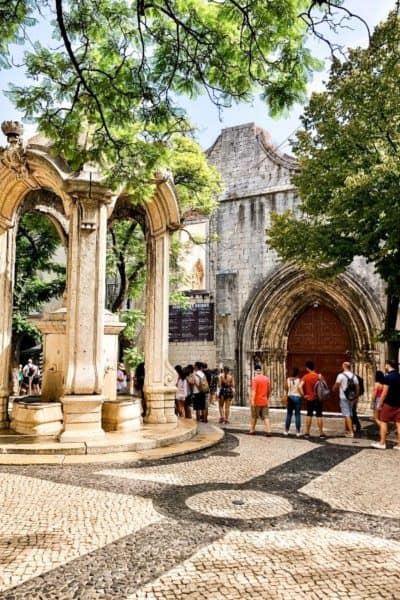
Fado in Bairro Alto
The nightlife hotspot in Lisbon is the Bairro Alto neighborhood. You’ll see lots of restaurants and bars in this area, so it’s a great spot for dinner and for drinks. It’s actually a beautiful neighborhood to walk around as well.
Fado is something you can’t miss in Lisbon, and this is the place for it.
What is fado? It’s a passionate Portuguese celebration of music and song. It was created hundreds of years ago by women when their men went off to sea, either for war or for the exploration that the Portuguese are famous for.
A great place to go for a casual feel with amazing entertainers and no dinner requirement is Tasco do Chico. I saw a picture of Anthony Bourdain with the owner above my table, so I knew it would be great. If you want something more upscale with dinner and a fado show, check out O Faia.
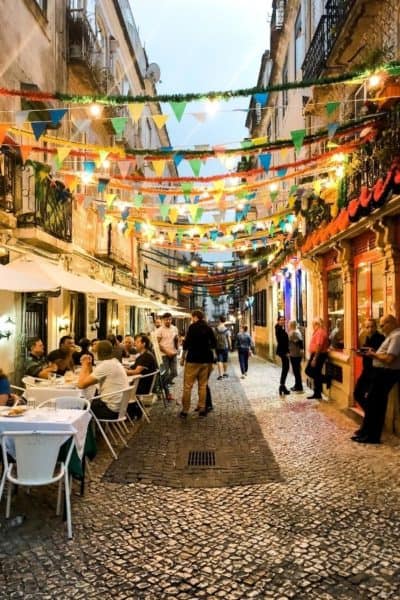
3 Days in Lisbon: Day 3
Day 3 in Lisbon takes you to the oldest neighborhood in Lisbon, called Alfama. There’s a lot to see in this neighborhood, and it’s quite steep, so plan to take your time to enjoy it.
Alfama
When the massive earthquake struck the city of Lisbon in 1755, it leveled much of the city. Not only the earthquake, but it was also All Saints Day, and the candles lit for the occasion caused a massive fire.
Most of the city was destroyed. However, Alfama remained largely intact.
The irony of this situation is that Alfama is where the “people of ill repute” once lived. So, the only neighborhood in Lisbon still standing during All Saints Day was the one area that was generally viewed as not as devout. Think about that for a moment. 🙂
As you wander the streets of Lisbon, you’ll see mostly wide streets—not so in Alfama. This quaint historic neighborhood is a maze, and purposefully so.
It’s located on the hill the castle is on under the Graça neighborhood, and the maze was to keep invaders from the castle. (Don’t be fooled by this, though, as Alfama is very steep!)
Alfama is a great place to take a walking tour. There are a lot of really interesting places in this winding area that you might miss unless you go with an experienced guide. The Alfama district is one of the most popular places in Lisbon.
Alfama is located here on a map.
Alfama Miradouros
Get lost wandering these streets to see what life was like in the past. There are many miradouros, or viewpoints, to see amazing city views in Alfama.
Lisbon is such a beautiful city, and taking some time to enjoy the views from the many miradoros is a great way to appreciate it.
- Miradouro das Portas do Sol—Incredible views at this lookout.
- Miradouro da Graça—Amazing castle views here.
- Miradouro da Nossa Senhora do Monte—Interesting church with an incredible view.
- Miradouro de Santa Luzia—Has a beautiful patio.
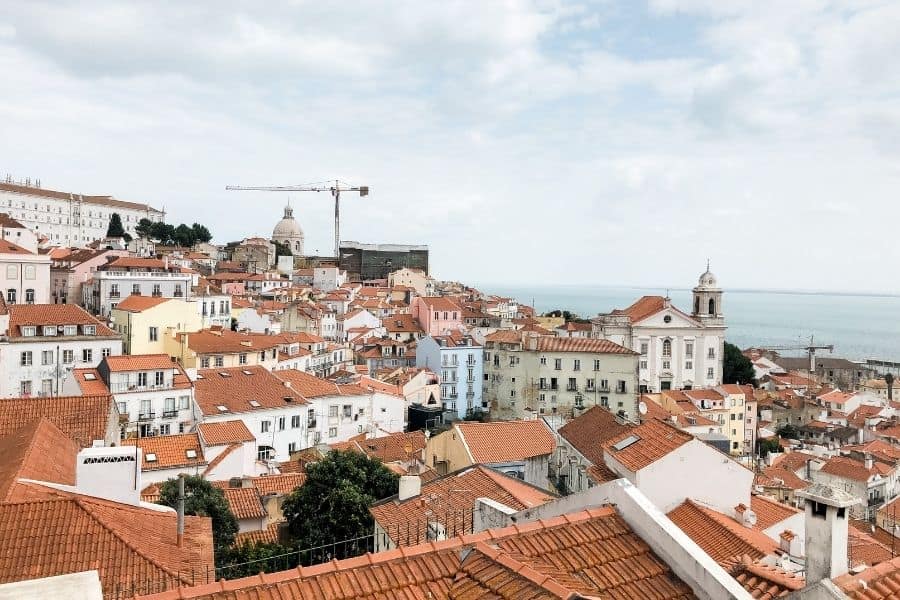
Ferra da Ladra
If you visit on a Saturday or a Tuesday, check out the Ferra da Ladra or Thieves Market.
This huge flea market offers almost anything you can imagine, and locals and tourists alike shop there. It goes on for as far as the eyes can see and is a great glimpse into local life. Buy souvenirs or just watch the locals.
The market is located here on a map.
Try Ginjinha
Pastel de nata may be the iconic Portuguese food, and ginjinha is the iconic and much beloved Portuguese drink. It’s a liqueur made by soaking ginja berrier (sour Morello Cherries) in alcohol, adding sugar and ingredients like cinnamon sticks and cloves.
It is served as a shot, and you drink “com” or “sem,” with or without cherries. The traditional version is com with a piece of fruit at the bottom of the cup.
You’ll find ginja, as it is often called, around Lisbon, and a great place to try it is in Alfama. A popular place is Ginjinha da Sé (at Rua de São João da Praça 3, 1100-253 Lisboa, Portugal). It is very close to the cathedral, and also worth seeing.
There are bars dedicated to this drink, and you can get it at many bars and restaurants. One of the most popular and oldest is A Ginjinha Espinheira, in the Rossio neighborhood. Ginjinha Sem Rival is just down the street on Rua Portas de Santo Antão 7. If you ask a local for the best, they will likely say one of the two.
The taste isn’t for everyone, but it’s a fun thing to try when you’re in Portugal. After all, can you say you actually visited Portugal if you didn’t have ginjinha and a pastel de nata? I’m not sure!
Tip from the locals: bring wet wipes as the drink can be quite a sticky experience.
Taberna Sal Grasso
I got lucky that someone mentioned this restaurant to me, and I’ll pay it forward by sharing it with you! It’s a tiny place with only a handful of tables. You’ll know you have arrived as you will see a line out the door and partially down the street.
It’s that good and worth the wait, though you may want to get there before 12:30 when they open to avoid the crowd.
You’ll probably be ushered in a diminutive woman who appears quite harried by the crowds. She’ll pull out a chair and frantically gesture at you to occupy the seat. They will fill every seat, so you will be dining with new friends.
The menu is written on a chalkboard hanging on the wall in Portuguese, so bring your translator. Or, just get daring and order, as you can’t go wrong.
When I went, I was seated with another woman, also traveling solo, and two men traveling together. We had a great time trying each other’s dishes and comparing notes about this incredible city.
Taberna Sal Grasso is located at Alfama, Calçada do Forte 22, 1100-256 Lisboa, Portugal.

Rossio Square
Easily one of the most picturesque squares in Lisbon, Rossio Square is striking with its waves of Portuguese tiles. There’s a large statue in the center.
If you liked ginjinha and want more, or didn’t get to try it when you were in Alfama, you can easily go to A Ginjinha Espinheira.
Rossio Square is located here on a map.
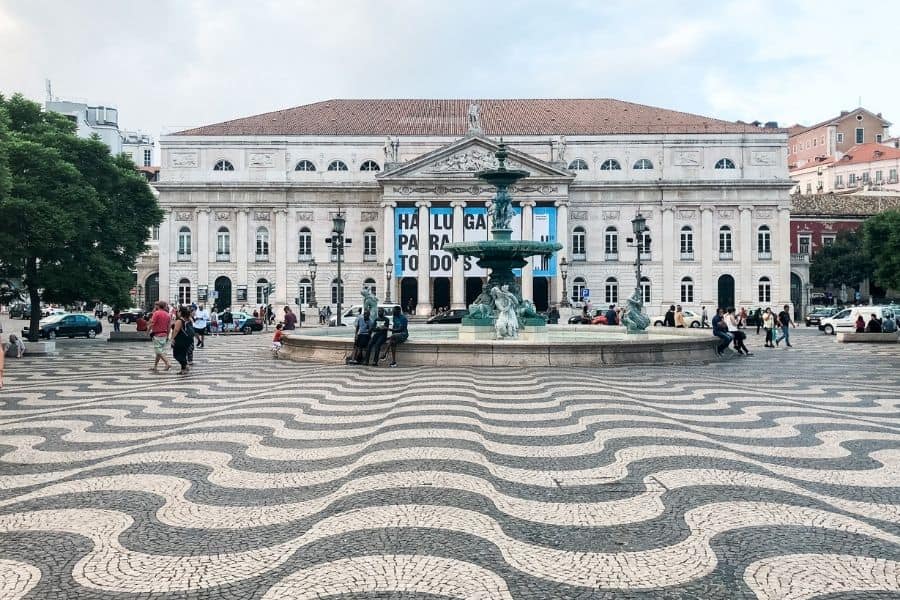
Mouraria
Next, head to Mouraria, or the Moorish Quarter. It’s a much less touristed neighborhood than many in central Lisbon, so you’ll get a feel for how the locals live here. There are some interesting areas with murals and street art.
Mouraria is located here on a map.
A Tribute
Wander the cobbled streets and look for “A Tribute,” a beautiful outdoor photo exhibit by Camilla Watson. It features the senior people who once lived in this neighborhood.
This exhibit is a really interesting display as the pictures were taken to reflect who each of them was as a person. You may be in the middle of a large city, but this neighborhood feels very small and personal.
The location is Beco das Farinhas, Mouraria, Lisbon.
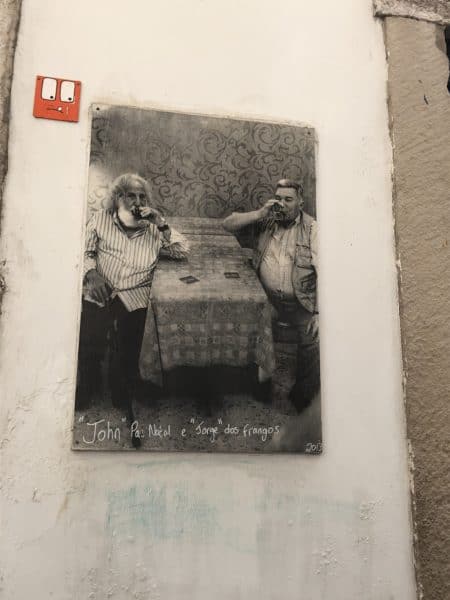
Chinês Clandestinos
When it’s time for dinner, follow your nose to find Chinês clandestinos, or off-book Chinese restaurants. These operate out of people’s homes, so you won’t see any signs or menus up.
You might see some red lanterns hanging above the door to indicate the restaurant. Or, you’ll see people milling around outside. If you smell Chinese food, you’re in the right place.
You won’t find these on Tripadvisor, so use your best judgment if you want to eat there or move on, as you’ll find plenty more.
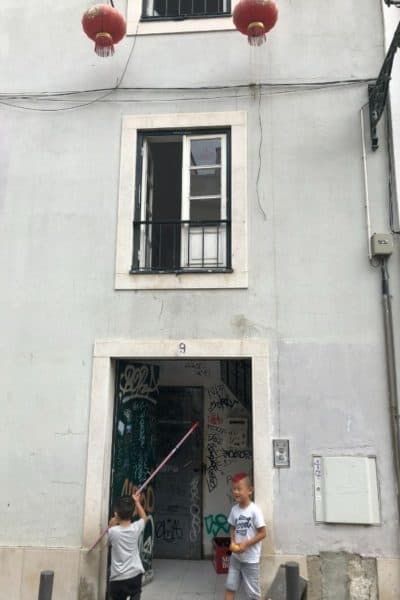
Sintra
If you have an extra day and want to head out of Lisbon, Sintra is the place to go. There are lots of tours leading to the magestic city of Sintra, and UNESCO World Heritage site. Or, you can easily take the train from the Rossio station to get there in 45 minutes or less.
Sintra is where the royal family used to spend their summers. It has a quaint and historic old town where the National Palace is prominently featured.
Just a 15-minute walk away is the Quinta da Regaleira, a property shrouded in mysticism and symbolism. It’s worth hiring a guide to take you through so you understand the stories of this fascinating place.
Head up the mountains to Pena Palace, overlooking Sintra from high above in the ridgeline. The palace and the gardens are stunning, and you can get some incredible views from this area. If you have time, not far from Pena Palace is the crumbling Castelo dos Mouros, the Castle of the Moors.
Visiting Sintra is the most popular day trip from Lisbon and a must-see. Check out this small-group tour to see Sintra and nearby Cascais.
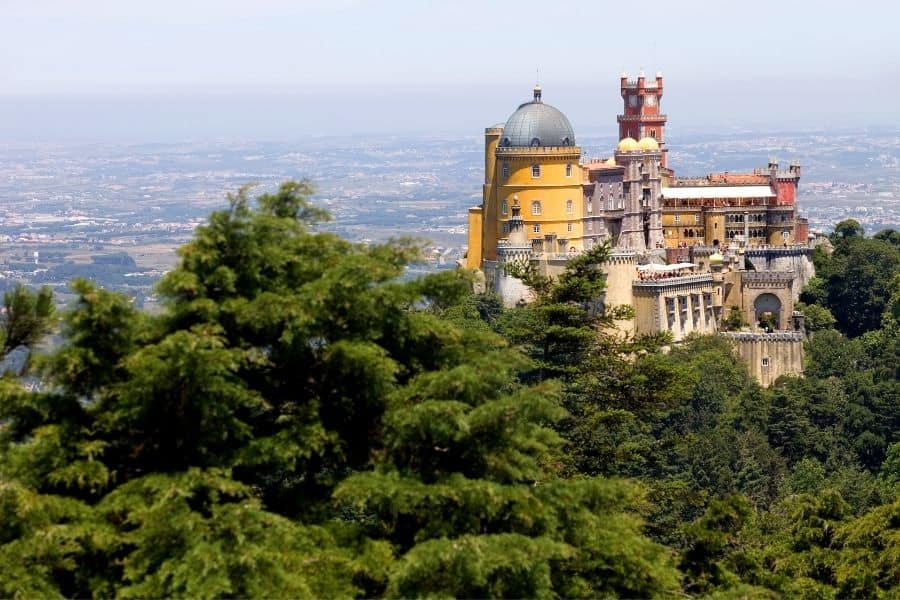
How to Get Around Lisbon
Lisbon is very much a walking city if you can do the steep hills. It does have an excellent public transportation system if you can use a little bit of a boost or if you head outside of the city center. You can purchase tickets on the bus, tram, and funicular if you’d like.
To travel on the metro, ferry, and suburban train, you need to buy a Viva Viagem card, a transportation card with an embedded chip. It can be used on buses, trams, and funiculars as well, and trips cost less when using it than purchasing tickets on board.
Purchase them at any Metro, ferry, and suburban train stations at the ticket office or at an automated ticket machine. (Note: the ticket machines do have an English translation, so it’s super easy.)
You can buy these in some shops as well, though it’s easy just to get one when you get to the station you’re traveling from. Or, get it at the airport.
The Viva Viagem card is only €0.50 (non-refundable) to purchase. You can purchase:
- A single one-way ticket for €1.50 ($1.80 USD)
- A 1-day ticket lasts for 24 hours from the first activation (different costs for metro only, metro with bus, tram, funicular, and if you add the ferry ranging from €6.40 to €10.60, $7.70 USD to $12.75 USD).
- The amount you choose from a minimum of €3 and multiples of €5 up to a total balance of €40 ($48.25)
When to Visit Lisbon
Summers are very hot and humid in Lisbon. The most popular times are from March to May and September to October because the weather is not quite as hot and humid, and you have the option to go to the beach if you choose.
Even though the summers are toasty, the beaches are packed with people. Winters are warm relative to the rest of Europe, though not beach weather.
In the summer, from June to September, average high temperatures are from 76° to 82°F (24° to 26°C), and lows range from 60° to nearly 63°F (around 15° to 17°C).
It generally rains less than an inch a month during this time. In the spring and fall, temperatures tend to be in the mid-60s to low 70s°F for highs (around 19° to 26°C) and in the 50s to low 60s°F at night (around 11° to 14°C).
Winter lows can dip into the mid-40s but generally don’t go lower (around 8°C). It does tend to rain a bit (up to several inches on average from November through February (around 110 mm).
Where to Stay for 3 Days in Lisbon
Anywhere in central Lisbon is a great place to stay. One of the most popular is the quaint Alfama district. Chiado is also popular due to its central location, and Bairro Alto is as well for its nightlife.
Cais do Sodre is a little more affordable and a short walk from everything if you’re on more of a budget. Here are some great options.
- Budget: Lisbon Destination Hostel is an affordably-priced and really interesting property located right in the Rossio train station. It’s a stunning building conveniently located for exploring the city in a short amount of time.
- Mid-Range: Hotel Borges Chiado is a unique blend of traditional and contemporary overlooking Chiado Square. Rooms are comfortable and well-appointed, and it’s close to the nightlife in Bairro Alto.
- Luxury: Hotel Avenida Palace is located in the heart of the city, close to Rossio Square. It was built in 1892 and has maintained its elegant and comfortable style.
How to Spend 3 Days in Lisbon
Lisbon is such an amazing city, increasing in popularity. The word is out, and tourists are flocking to see this gorgeous and surprisingly affordable city.
You can make the most of 3 days in Lisbon to see the top sites, but I’ll warn you—it’ll leave you wanting more!
You Might Also Like
- The Best Places to Visit in Portugal
- Porto Attractions—11 Reasons to Fall in Love
- What Makes Portugal So Special
- The Birthplace of Portugal: Guimarães
- 9 Things to Do in Sintra—The Best Day Trip from Lisbon
- Why You Should Visit Belém
- Braga City of Archbishops—The Best Day Trip from Porto
- Fun Things to Do in Lisbon—Conquer a Castle by Elevator
- Who Makes the Best Pastel de Nata? My Unpopular Opinion
- The Best 2 Days in Porto Itinerary
Like it? Pin it!
